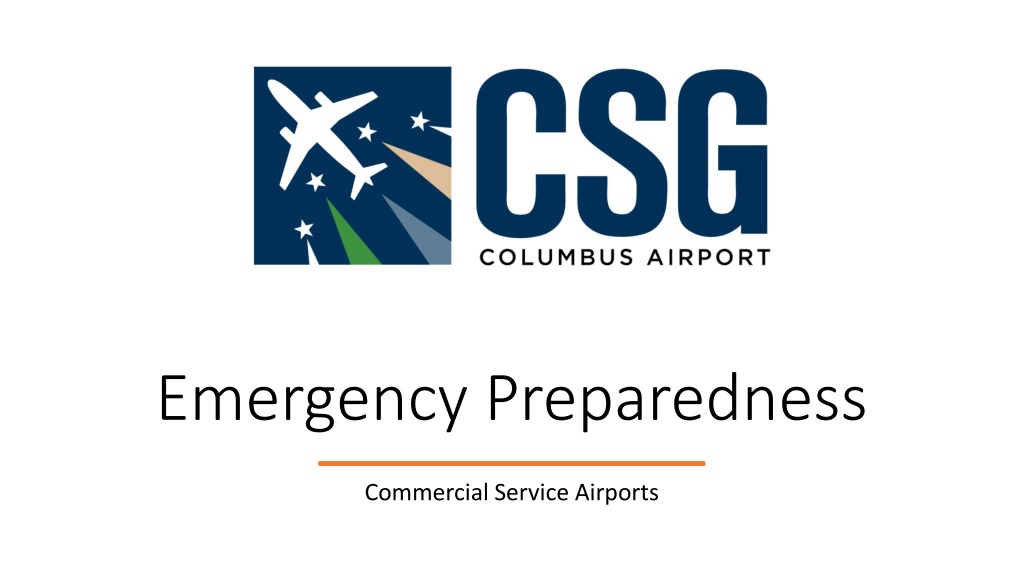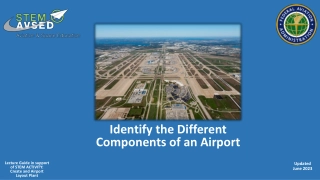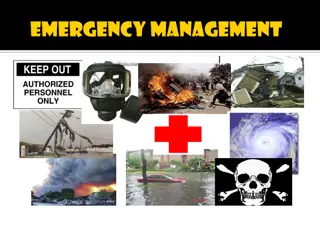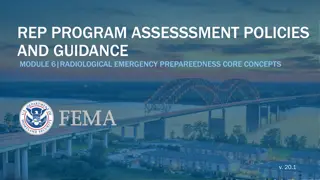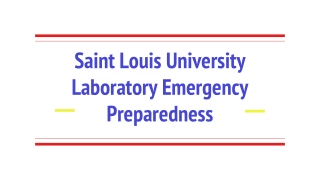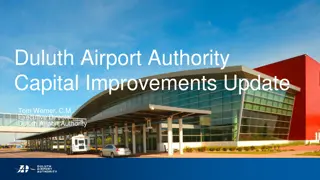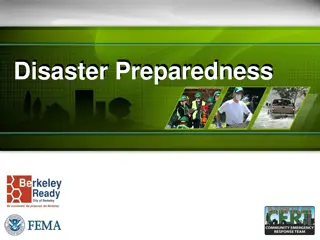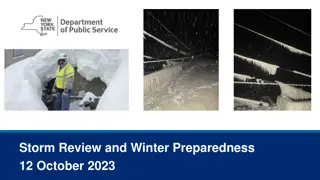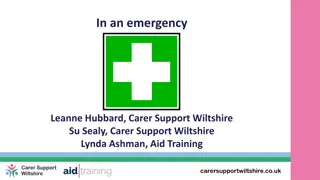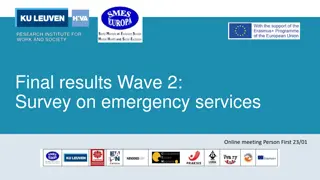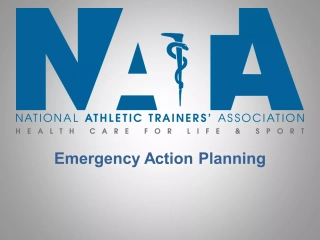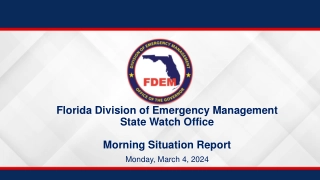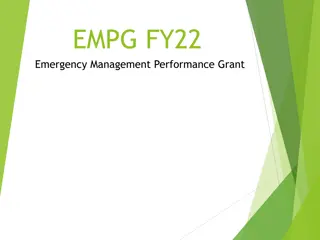Airport Emergency Preparedness for Commercial Services
Commercial service airports like Atlanta Hartsfield, Savannah/Hilton Head, and others must have an emergency plan in place to respond effectively to various incidents such as aircraft accidents, bomb threats, fires, and natural disasters. The Airport Emergency Plan (AEP) should include provisions for medical services, communication networks, and prompt responses to emergencies, ensuring passenger and property safety.
Download Presentation
Please find below an Image/Link to download the presentation.
The content on the website is provided AS IS for your information and personal use only. It may not be sold, licensed, or shared on other websites without obtaining consent from the author. Download presentation by click this link. If you encounter any issues during the download, it is possible that the publisher has removed the file from their server.
Presentation Transcript
Emergency Preparedness Commercial Service Airports
Commercial Service Airports Atlanta Hartsfield (ATL) Savannah/Hilton Head International Airport (SAV) Augusta Regional Airport (AGS) Columbus Airport (CSG) Southwest Georgia Regional Airport (ABY) Valdosta Regional Airport (VLD) Middle Georgia Regional Airport (MCN) Brunswick Golden Isles (BKQ)
Serves scheduled and unscheduled air carrier aircraft with more than 30 seats Serve scheduled air carrier operations in aircraft wit more than 9 seats but less than 31 seats Regulated by 14 CFR Part 139 The FAA Administrator requires to have a certificate Annual inspections
(a) In a manner authorized by the Administrator, each certificate holder must develop and maintain an airport emergency plan designed to minimize the possibility and extent of personal injury and property damage on the airport in an emergency. The plan must Part 139.325 Airport Emergency Plan (AEP) (1) Include procedures for prompt response to all emergencies listed in paragraph (b) of this section, including a communications network; (2) Contain sufficient detail to provide adequate guidance to each person who must implement these procedures; and (3) To the extent practicable, provide for an emergency response for the largest air carrier aircraft in the Index group required under 139.315.
Aircraft incidents and accidents Bomb incidents, including designation of parking areas for the aircraft involved Structural fires Fires at fuel farms or fuel storage areas Natural disaster Hazardous materials/dangerous goods incidents Sabotage, hijack incidents, and other unlawful interference with operations Failure of power for movement area lighting Water rescue situations, as appropriate Unmanned Aircraft Systems (UAS)s Prompt Response to ALL Emergencies
What is the AEP required to Include? provisions for medical services, including transportation and medical assistance The name, location, telephone number, and emergency capability of each hospital and other medical facility The name, location, and telephone number of each rescue squad, ambulance service, military installation, and government agency on the airport or in the communities it serves that agrees to provide medical assistance or transportation
What is the AEP required to Include? Cont. An inventory of surface vehicles and aircraft that the facilities, agencies, and personnel included in the plan under paragraphs (c)(2) and (3) of this section will provide to transport injured and deceased persons to locations on the airport and in the communities it serves; The name, location, telephone number, and emergency capability of each hospital and other medical facility A list of each hangar or other building on the airport or in the communities it serves that will be used to accommodate uninjured, injured, and deceased persons;
What is the AEP required to Include? Cont. Plans for crowd control, including the name and location of each safety or security agency that agrees to provide assistance for the control of crowds in the event of an emergency on the airport; and Procedures for removing disabled aircraft, including, to the extent practical, the name, location, and telephone numbers of agencies with aircraft removal responsibilities or capabilities.
What is the AEP required to Include? Cont. The plan required by this section must provide for The marshalling, transportation, and care of ambulatory injured and uninjured accident survivors; Coordination of airport and control tower functions relating to emergency actions, as appropriate. The removal of disabled aircraft; Emergency alarm or notification systems; and The plan required by this section must contain procedures for notifying the facilities, agencies, and personnel who have responsibilities under the plan of the location of an aircraft accident, the number of persons involved in that accident, or any other information necessary to carry out their responsibilities, as soon as that information becomes available.
The Airport Sponsor Responsibilities Coordinate the plan with law enforcement agencies, rescue and firefighting agencies, medical personnel and organizations, the principal tenants at the airport, and all other persons who have responsibilities under the plan; To the extent practicable, provide for participation by all facilities, agencies, and personnel specified in paragraph (g)(1) of this section in the development of the plan; Ensure that all airport personnel having duties and responsibilities under the plan are familiar with their assignments and are properly trained; and At least once every 12 consecutive calendar months, review the plan with all of the parties with whom the plan is coordinated, as specified in paragraph (g)(1) of this section, to ensure that all parties know their responsibilities and that all of the information in the plan is current.
The Airport Sponsor Responsibilities Each holder of a Class I Airport Operating Certificate must hold a full-scale airport emergency plan exercise at least once every 36 consecutive calendar months. Each airport subject to applicable FAA and Transportation Security Administration security regulations must ensure that instructions for response to paragraphs (b)(2) and (b)(7) of this section in the airport emergency plan are consistent with its approved airport security program. 49 CFR Part 1542 Airport Security FAA Advisory Circulars contain methods and procedures for the development of an airport emergency plan that are acceptable to the Administrator.
Resources at CSG Certified Law Enforcement Officers 3 Daily Self Inspections Certified ARFF personnel Wildlife Mitigation ARFF Station, ARFF Vehicles Gunshot Detection System Shelter Designations AEDs Spill UAS Detection System Plane Skate & Tugs Containment/Clean Up Kits
Partnerships Local Hospitals Columbus Police Department Columbus Fire & Emergency Medical Services Bomb Squad Hazardous Material Team TSA FAA (ATC) Local Hotels Local College Media
Lessons Learned ACTUALLY review your plan and practice Build Relationships USE QUICK REFERENCE CHECKLIST Color Coded Contact Phone Numbers Crane Services Food & Other Items Public Information Officer (YOU!) Remain calm at all times Be accessible Good decision making Broad factual information Be prepared for the unexpected
Contact for Resources Amber Clark, Airport Director Vice President of GAA Education & Scholarship Committee Chair Cell: (706) 575-0907 E-mail: aclark@flycolumbusga.com
